By The Survival Mom
Bringing you the best Preparedness articles from across the Internet for over 10 years!
Thursday, July 28, 2022
Wednesday, July 27, 2022
17 Lessons Learned From An 80 Year-Old Nurse
There is no doubt that the world of medicine has changed beyond recognition over the last fifty years. And yet, if the foundations of our technological society collapsed, would medicine still operate in the same way?
As doctors become increasingly specialized and increasingly dependent on the medical equipment, supplies and technology at their fingertips, it’s arguable that a 21st-century physician would find it hard to adapt to the world after SHTF.
But there are some people in our communities who hold a wealth of knowledge that would be applicable in this potential disaster scenario: our veteran nurses.
These professionals learned their skills before modern technology came on the scene, and learned the art of making do with what was available. We can learn valuable survival techniques from them.
Here are some lessons from a nurse who has lived through difficult times when a hospital is far away, there are no other resources available, or treatment is desperately needed during a war.
In an age of the “cure-all” antibiotic, some of these techniques have been all but lost, yet they are still valuable and effective.
Related: This 3500-Year-Old Powerful & Natural Cure Treats Many Diseases
Treating the Common Cold
1. Steam Inhalation
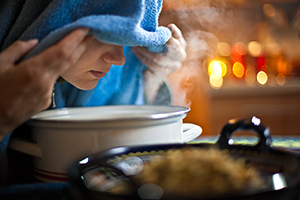
Inhaling warm, moist air has long been used as a remedy to soothe clogged sinuses.
It can help to relieve nasal irritation and swollen blood vessels, allowing you to breathe normally for a short period of time.
Prepare a large bowl of boiled water and a towel, then drape the towel over the back of your head and lean over the bowl of hot water. Breathe!
This is a good way to get relief from a common cold, flu, sinus infection, or nasal allergies without having to go to a clinic or resort to medicines. Because the water you use for steam inhalation is very hot, make sure the bowl is placed on a flat surface and can’t be tipped over.
2. Menthols
Menthol and eucalyptus oils help to open the airways and make it easier to breathe. You can use essential oils on a piece of cloth near your head.

If you are doing steam inhalation, add some menthol crystals, Vicks VapoRub or some mint or eucalyptus essential oil to your hot water.
This can be more effective than just using steam, but be careful not to add too much – a drop or two is usually enough.
Adding too much may cause damage to your sinuses.
Treating Chest Infections
3. Postural Drainage for Lung Problems
Postural drainage has been used since around 400BC to get mucus out of your lungs. The idea is for the area of lungs that are affected to be higher than your upper chest and airways, so that the mucus can move by gravity towards the larger airways.

From there, your body’s natural cleansing mechanism will help remove the mucus.
The best position for you will depend on which part of your lungs is affected. If it’s your upper chest, then a sitting position may help.
If it’s your lower lungs, try a position such as lying on your side, or lying on your front with a pillow under your hips. Inhale through the nose and exhale through the mouth. The out-breath should be twice as long as the in-breath. Do this for a few minutes, then rest.
You can do each session for 30 minutes, three times daily. Allow at least an hour after eating before doing this treatment.
4. Chest Percussion
This is also used to relieve congestion when in a postural drainage position. By gently tapping the walls of the chest, you help physically dislodge mucus that is trapped in the small airways. A cupped hand traps air and makes it more comfortable. Practice on yourself first to get the pressure right.
You can use both hands, beating to a rhythm, turning the patient from their front, then onto their sides, then facing you so can loosen the top of the lungs by beating on their back. Do this for 15-30 minutes, according to how they are responding to the treatment.
Treating Sore Throats
5. Honey
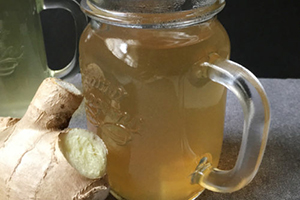 Honey is well-known for its sweet benefits, and it also has antibacterial properties.
Honey is well-known for its sweet benefits, and it also has antibacterial properties.
Combining it with ginger and calamansi gives a perfect elixir for sore throats, coughs and colds. Boil some ginger root and let it cool slightly before adding your calamansi with honey and drinking it warm.
Calamansi is also known as Philippine Lime, and this can be replaced by lemon, or chamomile tea.
Related: The Antibiotic Honey That Shouldn’t Be Missing From Your Stockpile
6. Garlic
Add fresh garlic to your food when cooking. Its antimicrobial properties will help to treat the infection in your throat.
7. Homemade Gargle
Baking soda and salt dissolved in water makes a useful mouthwash or gargle for sore teeth, gums and throats.
The baking soda is anti-acidic, which reduces astringency in the mouth and limits growth of fungi and bacteria.
Treating Wounds
8. Poultices for Boils or Abscesses
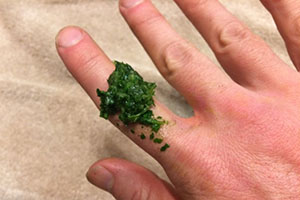 Poultices have been used as a home remedy for centuries. The moist heat from a poultice helps to draw out infection and shrink abscesses naturally.
Poultices have been used as a home remedy for centuries. The moist heat from a poultice helps to draw out infection and shrink abscesses naturally.
Epsom salts are the most common poultice ingredient, as this helps to dry out the pus and drain the boil.
You can make specific poultices to treat your wounds, such as a herbal poultice for minor inflammation or abrasions, bread poultices for abscesses, cysts, or splinters, baking soda poultices for minor skin irritations like razor burn, and an activated charcoal poultice for bug bites or stings.
If your poultice mixture is a paste, you can apply it directly, otherwise place the mixture on a clean cloth and then apply it.
Don’t use this if the skin is badly infected. You should also patch test before you use a poultice to make sure you won’t have an allergic reaction.
Treating Sore Muscles
9. Oral Relief for Muscle Pain
If you have muscle pain, ginger may be able to help you, as it contains an active component found in aspirin.
If you want to add a tangy flavor to your drink, you can prepare ginger tea by boiling the slices of ginger and lemon. Allow it to simmer and rest for a few minutes before serving with honey.
10. Muscle Regeneration
To make sure your body has all the nutrients it needs to regenerate muscle after an injury or strain, turn to some natural products.
Beetroot juice, cherry juice, and tomato juice are all rich in muscle-building compounds.
Related: How To Make Bulletproof Body Armor Plate
Treating Diarrhea and Digestive Complaints
11. Stay Hydrated
Dehydration is the biggest risk when suffering a bout of diarrhea, especially for children. It’s not only fluid but also salt that is lost.
Make your own electrolyte solution by mixing one liter of water with half a teaspoon of salt and 6 teaspoons of sugar for oral rehydration. If you are eating anything, eat small meals of bland food, such as rice, bananas, and soups.
12. Activated Charcoal as an Antidote to Poisoning, and Digestive Complaints
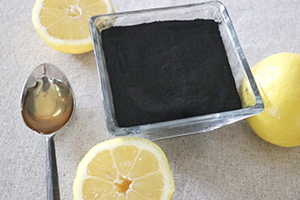 The benefits of activated charcoal have been known since ancient times. It’s called the “universal antidote”.
The benefits of activated charcoal have been known since ancient times. It’s called the “universal antidote”.
This is not charcoal from your barbeque, but a product made from carbon-rich materials such as wood or coconut shells, heated to very high temperatures.
There are many uses for activated charcoal, from whitening teeth, to skin care, or as a water purifier.
It is listed in the WHO’s list of essential medicines as a safe and effective medicine in a healthcare setting. To treat suspected food poisoning, you can take 1g up to four times daily.
13. Probiotics for Digestive Complaints
Although today’s understanding of probiotics was not available years ago, what was understood was that people who drank tea made from tropical fruit were less likely to catch cholera, which is an infection in the small intestine.

Saccharomyces boulardii is a yeast found in lychees and mangosteen and is available in food supplements. It can help with IBS, Chrone’s Disease, diarrhea and other digestive complaints.
Other probiotics that are helpful are fermented foods that contain live bacteria and yeast.
Treating a Fever
14. Physical Cooling
Use cool compresses on wrists, armpits, groin, back of the neck, and forehead. This will dissipate the heat.
Tepid baths can also provide relief and draw out the heat from your body. Don’t be tempted to jump in a cold bath as lowering body temperature too quickly can be dangerous.

Your body will try to heat the cooled areas and draw blood from vital organs.
Another ancient remedy is the wet sock trick. Bathe your feet in warm water and then put on a pair of socks that have been soaked in cold water. This increases circulation around the body, helping to relieve fever symptoms.
15. Understand that Fever is Killing The Infection
Fever is the body’s way of fighting an infection. Your tissues become a hot and unwelcoming place, and the bacteria and viruses find it hard to replicate and live in your feverish body!
So bringing down your temperature isn’t always the best approach. Rest to allow your body to do its job. Hydrate by drinking as much fluid as you can. Suck ice cubes if drinking is making you nauseous.
16. Treat the Symptoms
If the symptoms of the fever get too much, use some gentle herbal remedies to relieve the symptoms. Linden tea, willow bark, and ginger are all drinks that can help bring relief.
17. Chicken Soup
This comfort food has often been a relied-on cure when feeling unwell. The combination of fluid, anti-inflammatory ingredients, vitamins, minerals, proteins and fats all combine to make it an essential ingredient on the path to recovery.
These are lessons I learned from my great-aunt, my grandmother’s sister. She was a nurse in Queen Alexandra’s Royal Naval Nursing Service during WW2, and continued to apply her practical skills and level-headedness to her career and family life in the decades to follow.
By the time I was in my teens, she was in her 80s and retired, but still retained that same passion for problem-solving and treating everyday illnesses. Her enthusiasm inspired me into the medical field, ultimately choosing a path in veterinary medicine.
Yet, however, advanced the technology we come to depend on, I find my aunt’s advice still relevant today: the simplest cure is often the most effective.
Tuesday, July 26, 2022
16+ Non-Traditional Containers For Your Bug Out Bag/Emergency Kit

When it comes to selecting a bag for an emergency kit, many of us veer in the direction of tactical-looking backpacks, or any type of backpack at all. And, it’s no wonder. A good backpack has multiple pockets and pouches to help organize your gear and supplies, and they can be carried on your back, leaving hands free. However, they aren’t always the right solution for every scenario. Here are some ideas for other types of containers for emergency kits.
Non-traditional Containers for Emergency Kits and Bug-out Bags
Sixteen suggestions for backpack alternatives, plus a bonus idea!
A rolling suitcase on wheels
Look for sturdy wheels because if one breaks off, you’ll be carrying that suitcase. Not fun! Some of these suitcases also have backpack straps.
A Rubbermaid container with a lid
You select whichever size suits your needs and space. These are a good choice because the bin itself can be used to hold water, kindling, and a lot more.
Under the bed storage container
Mine fits perfectly in the back of my Tahoe and the transparent plastic lets me see the contents.
Trash can on wheels
These hold a lot, are very sturdy, and have an attached lid. They will also be heavy and difficult to load into a truck. However, if a trailer is part of your bug out/evacuation plans, you could store a trash can, fully packed, in the trailer. Include a box of heavy-duty black trash bags to keep the interior of the trash can clean if you ever have to use it for actual trash!
Space Bags
Great for use with softer items, such as blankets, coats, jackets, and pillows.
5-gallon buckets with lid
Again, these buckets have multiple uses besides holding your emergency kit contents. A product like a Bucket Backpack would provide an alternative way to carry the bucket longer distances.
Multiple milk crates
My husband swears by these! They are extremely durable, stack easily, but do not have lids. They could also be free if you can find a grocery store that will give you one or more.
Military duffel bag
Soft-sided means you’ll be able to shove this bag behind and between things, and they come in several sizes. Their muted colors are also a plus.
Ziploc Flexible Tote
These are inexpensive, allow one to easily see inside the tote, and lightweight. They could be good for keeping things like blankets and seasonal clothing separate from other items. The downside is they’re not heavy-duty, so it’s not a good option if your evacuation includes trekking through the wilderness.
Diaper bag
The waterproof lining could be very helpful, especially if you have small kids and/or a baby.
Toolbox
Not necessarily lightweight depending on the style you choose but could be very useful for protecting fragile items. And they come in a variety of price points.
Metal bucket with lid
I have this one and it’s definitely a multi-purpose container.
Rubbermaid Action Packers
Heavy-duty, waterproof, and lockable. Keep in mind they don’t have wheels. They also don’t stack well as the lid is lightly domed to allow water run-off. However, if these cons weren’t an issue, this is a solid choice.
Heavy-duty black trash bags
Be sure to buy “contractor” bags. These are amazingly resilient, stretch a bit as you stuff more into them, and are very cheap. They would be useful for packing soft things like bedding, clothing, and sleeping bags.
A messenger bag with shoulder strap
Anything with a shoulder strap will leave both hands free and might be easier to carry than a backpack for someone with back problems.
Coolers
These are waterproof, hold a lot, and don’t automatically announce they’re containers for emergency kits. Get one on wheels so you can roll it if the need arises.
A fisherman or photo vest
Obviously, this won’t carry as much as these other containers, but with all the multiple pockets, you could keep the most essential items close at hand. Check out ScotteVest for more discreet options.
Features to Consider When Selecting Containers for Emergency Kits
When choosing your containers, keep in mind that they might be in for a pretty rugged future. Look for:
- Extremely durable fabrics
- Sturdy construction
- Heavy-duty zippers, snaps, or other closures
- Colors that blend in
- Non-tactical appearance. This may cause you to look too prepared and a potential target.
- Tight-fitting lids
My Recommendations for Dividing the Contents of Your Emergency Kit
When planning for an emergency evacuation, I recommend dividing the contents of your emergency kit into 2 or more different types of containers. For example, a 5-gallon bucket can hold food and cooking supplies and will provide an emergency toilet, a large water container, and a handy tote for firewood. Then use a Space Bag to hold sleeping bags and cold weather clothing and finally a large backpack for everything else. You’ll have 2 multi-purpose containers and a backpack large enough to hold all the essentials in case you have no choice but to continue your evacuation on foot and have to leave the bucket and Space Bag behind.
Also, keep in mind the different ages and physical capabilities of your family members. Even young kids can carry small backpacks, easing the load for parents and teens. Ideally, you’ll want one bag per person, although in each bag there should be a few supplies that are communal.
What kinds of non-traditional containers for emergency supplies have you used and recommended?
Monday, July 25, 2022
Top 7 Safest Places During Martial Law
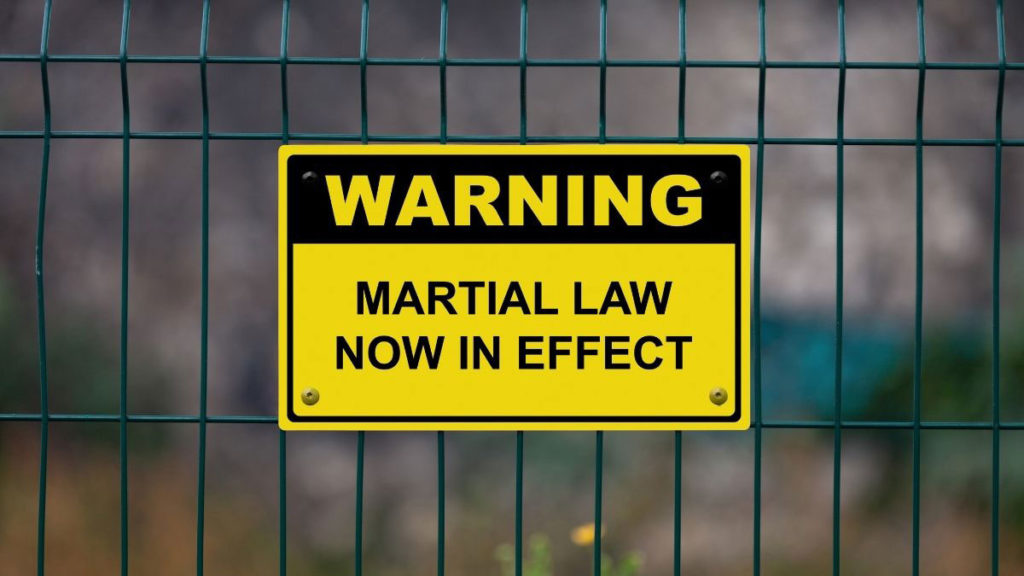
You’re facing some type of SHTF situation and civil order is falling apart. The military is about to step in. Now you’re wondering, where are the safest places during martial law?
Before we get there, let’s go over a few of the martial law basics.
FAQs
Who Declares Martial Law?
In the United States, martial law can be declared by the President of the United States, Congress, or a State governor. (Note: some people argue the President lacks the authority to declare martial law.)
While the U.S. Constitution doesn’t address martial law directly (courts have addressed it), nearly every state in the nation has a constitutional provision that speaks to the imposition of martial law. The President and Congress can declare martial law for the country as a whole. Governors can declare it for their state.
When is Martial Law Declared?
Martial law is declared when the government determines military forces are needed to maintain civil order during periods of war, insurrection, or natural disasters.
It has been declared at least 68 times in the United States (source). Nine of those instances have been since World War II and six of those had to do with desegregation in the South.
What are the Rules of Martial Law?
There are a lot of gray areas when it comes to what can be done during periods of martial law, but there are some rules:
- The military commander has nearly unlimited authority to make and enforce laws.
- Martial law suspends all existing laws and the ordinary administration of justice.
- Civilians may not be subject to military tribunals if civilian courts are functioning.
- Military personnel operating under martial law must act in accordance with local law.
- Citizens who have been improperly wronged by military power have the right to seek remedies.
Top 7 Safest Places During Martial Law
If civil order is falling apart, we have been attacked by enemy forces, or some other crisis is brewing, martial law may be imposed to maintain law and order. Where should you be when that happens?
The safest place is going to depend first and foremost on the crisis at hand. If an earthquake strikes and the military is stepping in to control looting and deliver clean water, martial might be a good thing.
There are times, however, when martial law may not be such a great thing.
Consider, for example, what the United States did to Japanese-Americans following Pearl Harbor. President Roosevelt issued Executive Order 9066, which authorized the Secretary of War and military commanders to place Japanese-Americans (most of whom were American citizens) in internment camps.
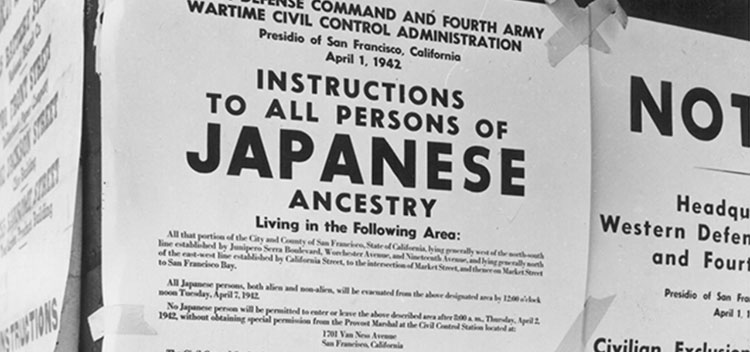
Do you think Japanese-Americans thought the military was there to help?
One of the most stunning ironies in this episode of American civil liberties was articulated by an internee who, when told that the Japanese were put in those camps for their own protection, countered “If we were put there for our protection, why were the guns at the guard towers pointed inward, instead of outward?”
https://www.archives.gov/education/lessons/japanese-relocation#background
The best place to be during martial law is going depend on the crisis, where you live, and your personal situation. There is not going to be any one best spot for all instances of martial law. The safest place in one situation may be the most dangerous in another.
I present these places in no particular order…
1 – The Military Itself
It might sound counterintuitive, but the military itself might be the safest place to be during martial law. You are the top priority for receiving supplies, gear, and equipment. You have the backing of the military. You’re on the side making the rules.
Alternatively, if the United States is under attack by an enemy state, being in the military means being a target.
2 – Right Where You Are
Don’t assume the best place to be under martial law is somewhere other than right where you are. If the military is showing up on your street to restore order, maybe you want to stay put. A military presence would mean steps are being taken to get the situation under control.
Bugging out could lead to its own set of challenges. Maybe there’s more disorder where you’re planning to go than where you are.
Make sure you have plenty of water stored, a healthy supply of long-term food storage, and the ability to communicate with the outside world. Stay inside. Stay safe.
2 – Away from People
If you look at history during periods of unrest, it’s not always troops to worry about during martial law. It’s often one’s neighbors.
For example, read The Bielski Brothers, a story about a group of Jewish brothers who started a town of Jews in the middle of the woods during the Holocaust. While Nazis were most certainly a problem for The Bielski community, it was often the locals – their neighbors – who ended up notifying authorities about Jews in the area.
We see the same story unfold in the Hans and Sophie Scholl story A Noble Treason. The development of “the German look”, the act of looking over one’s shoulder to ensure snitches weren’t listening, was necessary to avoid the punishment of a military tribunal for “crimes” against the state.
Examine the Rwandan Genocide of the early 1990s. If you look at the book, We Wish to Inform You That Tomorrow We Will Be Killed with Our Families, you’ll find it didn’t matter how long somebody had been the neighbor of somebody else – most would turn against their neighbor.
You don’t need to be suspicious of everyone, of course. In some cases, being near people may be best. You could be closer to family and friends who can watch your back. You could be near people working as a community to rebuild.
4 – As Far from Cities as Possible
Going rural is something most people grasp intuitively. Consider the mass exodus from Paris before the 2020 lockdown. Cities are incredibly population-dense areas that are going to be hotspots of military activity during a crisis. It’s simply an economical use of resources and personnel to focus on urban areas during a period of martial law.
If a general can use 5000 men to control 500,000 people in a city versus 40,000 in a large county, where do you think he’s going?
If you live in a city now and uprooting yourself for a permanent move isn’t possible, at least know how to bug out from a city and know where you’re going to find refuge in advance.
I also recommend Combined Arms Operations in Urban Terrain for anyone that lives in a city. The book will give you an idea of what to expect as the military steps in to restore law and order.
Combined Arms Operations in Urban Terrain: FM 3-06.11
- Used Book in Good Condition
- Army, Department of the (Author)
Another book I recommend is Civil Disturbances. This book “provides discussion and techniques about civil disturbances and crowd control operations that occur in the continental United States.”
Civil Disturbances: atp 3-39.33
- Army, Department of the (Author)
- English (Publication Language)
Know that if you plan to suddenly show up in some rural area during martial law where no one knows you, the locals will wonder what you’re all about. You may very well end up with more eyes on you than if you stayed in the city in the first place.
5 – In the Mountains
Bugging out to the mountains isn’t going to work for everyone. In fact, it’s going to work for very few. But if you live in the mountains already, or you’re looking for a safe place to hunker down, it’s hard to beat the hills.

For the same reasons it’s generally safer in rural communities during martial law than in urban communities, mountainous locations lend themselves to being safer.
There’s a reason that Bin Laden escaped to the mountains of Tora Bora, Afghanistan. They’re hard to navigate and difficult to cross. Mountains are logistical nightmares. You have much more space to disappear in the hills.
On the other side of the coin, how are you going to get supplies when you’re isolated in the mountains? Food runs out fast. It’s colder in the hills. Mountain survival isn’t easy.
If you have some bushcraft experience you’ll do better, but if you have bushcraft experience, you already know how hard it’d be.
6 – The American Redoubt
James Wesley Rawles of Survival Blog is famous for building up the case for Montana, Wyoming, and Idaho being the perfect locations to retreat within the continental US. Rawles is well-respected in the prepper community, so his suggestion is worth noting here.
Rawles points to decreased population density, fewer cities, independent-minded folk, good cropland, and heavy mountains as being the main reasons these are great states to reside in for any disaster. Idaho in particular has long been known to attract preppers.
Note, however, that this region – Montana in particular – has a large number of missile silos. If we were facing a nuclear exchange, this area could be a target. If you’re living in this region, consider using our free designs to a build low-cost fallout shelter.
7 – In Hunting Cabins, Tiny Homes, Bunkers, and Other Hidden Retreats
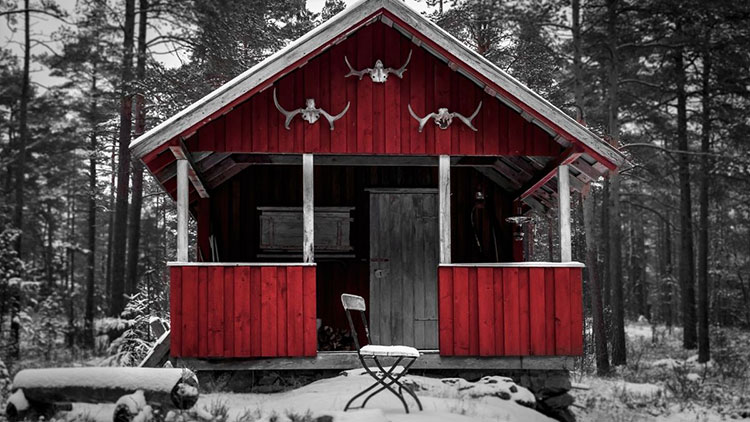
Houses are publicly listed addresses with all your personal information attached. The only way around this is to follow the advice listed in Bazzell’s Extreme Privacy.
SALE
Extreme Privacy: What It Takes to Disappear in America
- Bazzell, Michael (Author)
- English (Publication Language)
$31.98
Buy on AmazonHowever, some people have small hunting cabins, tiny homes, bunkers, or other forms of hidden permanent shelters that nobody else knows about in secluded land away from the rest of society.
If there’s one more thing we see throughout history it’s that human rights essentially go out the window during a period of martial law. Confiscation of supplies from “hoarders,” forced labor, intimidation, rape, and other atrocities increase exponentially.
You can get away from it all by getting away from people, but you need shelter. A remote cabin can serve that role.
Additional Tips to Stay Safe During Martial Law
There’s more to staying safe during a period of martial law than just finding a safe place to relocate to. A safe place without the right supplies or know-how could be worse than getting stuck in the wrong place with plenty of supplies and skills.
Be Prepared in Advance
This is going to be obvious to preppers, but if you’re new here – get prepped today so you’re ready for tomorrow!
Stock up on food and water first and foremost. Know how much ammo you might need and how to store it. Stock up on precious metals like silver and know where to hide it in your house.
Be Ready to Bug Out
Even if the safest place during martial law is right where you are, things could change in a second. If you decide to bug in, be ready to bug out just the same.
You never want to box yourself in. Have options. Be able to stay mobile. Have a plan, a backup plan, and a backup plan to your backup plan.
Stay Gray
You likely already know the gray man concept of blending in, seeming like everyone else, a nobody. That applies here.
Don’t brag about your preps. Don’t show off your stockpile during a crisis. If your town has run out of fuel, be very careful about driving around or running a generator. That would attract attention.
Don’t make yourself a target. No matter how prepared and well-off you are, appear on the outside to be in the same boat as everyone else.
Stay Neutral
Unless you’re facing forces that are putting you and your family’s welfare at risk, or if there’s a war at hand where you have to take a stand, stay neutral.
Siding with one side inevitably means making enemies with the other side. Avoid making enemies.
Final Thoughts
The main takeaway here is that martial law is not a safe time. If things were stable, there wouldn’t be martial law in the first place. The safest location is one that won’t place you in constant contact with troops, neighbors, and others.
No matter where you go, you’re going to be at an increased level of danger during such a time. However, if you’re looking for as safe a location as possible, I believe these are the locations that will keep you safer than many other spots.
Don’t delay personal preparedness!
Resupplying your retreat, whether a remote cabin or your suburban home, needs to be taken into consideration for such an event. It does no good to have a fantastic underground bunker in the Adirondacks if there’s only a week’s worth of water inside and you’re 100 miles from civilization.
If you’re looking to read more into this subject, try Joel Skousen’s Strategic Relocation.
Strategic Relocation, North American Guide to Safe Places, Fourth Edition
- The new 4th Edition with the latest available statistics including text, tables, and maps
- Updated country-by-country and state-by-state reviews
$35.00
Buy on AmazonWhat are your thoughts? Do you agree with my suggestions? Did I miss something? Let me know in the comments below!
Subscribe to:
Posts (Atom)




